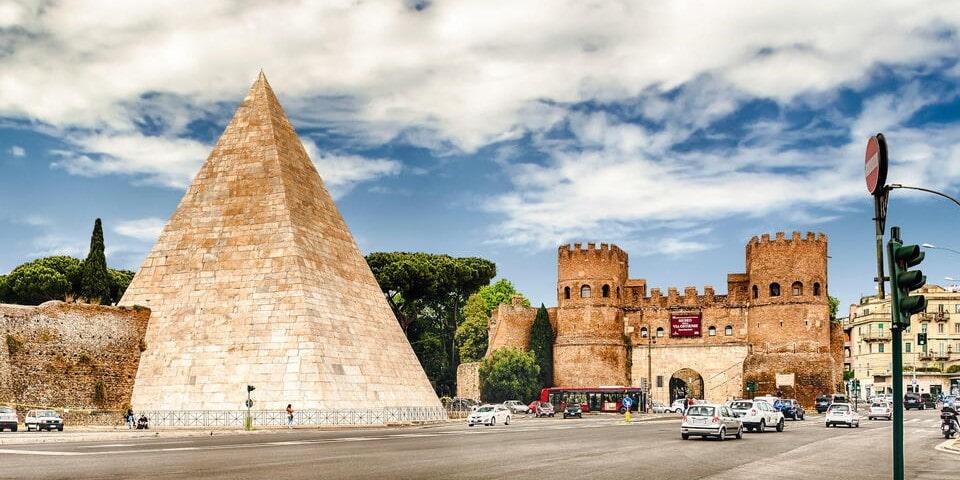

24840 views

| Tip | You can also see the Pyramid during a day trip to Antique Ostia or the sea from Rome. See detailed instructions on how to get to Ostia from Rome. |
|---|---|
| Closest bus stops |
|
| Closest subway stations |
|
| Address | Via Raffaele Persichetti, Roma |
The Pyramid of Caius Cestius is the lone remaining structure from a group of monuments built in Rome around the first century B.C. when the style that emerged following the conquest of Egypt in 31 BC had an impact on tomb building.
Contents
ToggleRome’s sole remaining pyramid is situated on the edge of the Testaccio neighborhood, right across the Piramide train station, next to the city’s Non-Catholic Cemetery.
The 36-meter-tall monument was erected in the first century BC as a tomb for Caius Cestius, a powerful Roman magistrate.
Caius Cestius, a Roman politician and member of the priestly college of epuloni, stipulated in his testament that his pyramid-shaped mausoleum should be built in 330 days. Between the years of the introduction of the law against the ostentation of luxury, which prevented the installation of some precious tapestries inside the cell, and that of the death of Agrippa, son-in-law of Augustus, who was listed among the beneficiaries of the bequest, the tomb was constructed along the Via Ostiense. This dates its construction between the years of 18 and 12 BC.
Later, the Pyramid was incorporated into the walls that the emperor Aurelian built between 272 and 279 on his initiative. The structure, which rises 36.40 meters high and has a square base of 29.50 meters on each side, is constructed of a brick curtain and cement work around the perimeter. Its exterior is covered in slabs of Luni marble.
According to Egyptian tradition, the burial chamber, which is around 23 square meters in size and has a barrel vault, was sealed up at the time of burial. The cinerary urn and a substantial piece of the decoration were lost as a result of the first violation of the tomb, which most likely occurred in the Middle Ages through a tunnel excavated on the northern side.
The walls are frescoed with a decorative pattern of panels, where figures of nymphs alternating with lustrous vases on a light background. Four winged Victories holding crowns and ribbons are depicted above, at the corners of the vault. In the middle, there must have previously been an apotheosis scene depicting the patron of the sepulcher.
The Archaeological Superintendency of Rome completed the restoration of the sepulchral cell in 2001. A subsequent renovation started in 2012 and was finished in 2015.

Author: Kate Zusmann
This website uses cookies. For more info read the cookies policy
Rome.us © 2025. Created with love by Roman experts and guides.